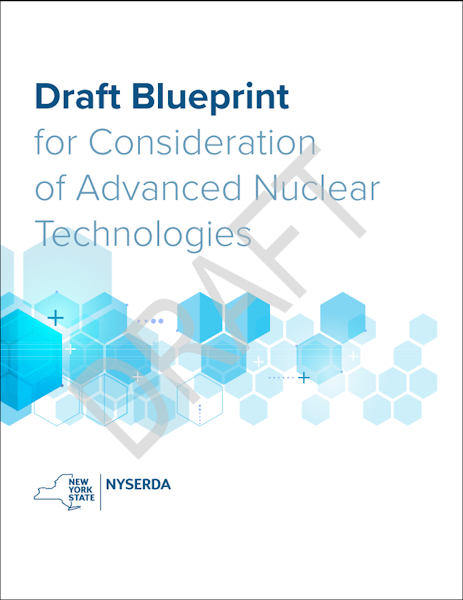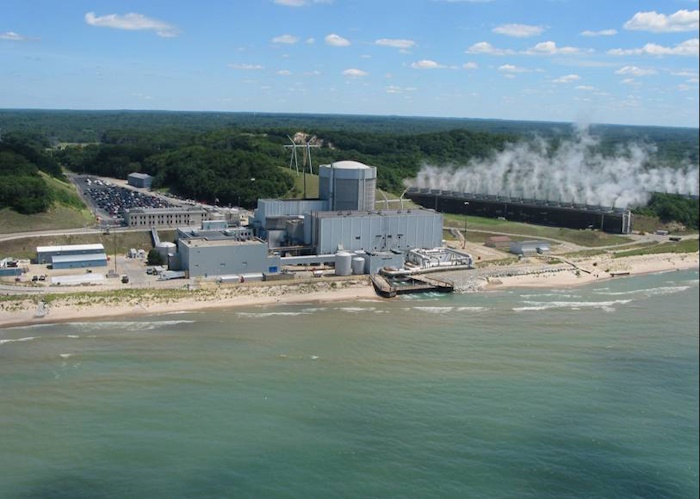Deadline for public comment is Nov. 8
New York State has extended the public comment period on the draft of its blueprint for the next generation of nuclear technology by one month, until Nov. 8.
The extension came after an appeal by State Sen. Pete Harckham, whose district includes eastern Putnam County, and Assembly Member Deborah Glick, who represents part of New York City.
The New York State Energy and Research Development Authority (NYSERDA) unveiled its Blueprint for Consideration of Advanced Nuclear Technologies in September. “It is more than a technical document — it’s a critical policy decision with lasting implications,” said Harckham. “Due to the long lifespan of certain radioactive materials, the choices made today will impact generations.”
As part of the state’s ambitious climate goals, New York seeks to get 100 percent of its electricity from zero-emissions sources by 2040. To do so, it’ll need what’s referred to as “dispatchable emissions-free resources,” or DEFRs.
Much like the current generation of fossil-fuel plants that only run a few days a year when the electric grid is straining from heavy use, DEFRs would be utilized during “prolonged periods of low solar and wind output,” such as in the winter, when there are fewer hours of daylight. Without DEFRs, the state would rely on a “significant overbuild” of wind, solar and battery storage.

This past summer, the New York Independent System Operator (NYISO), the entity that manages the state power grid, estimated that at least 20 gigawatts of DEFR capacity will be needed by 2040 to replace the 25.3 gigawatts the state currently gets from fossil fuels. But there is one significant drawback to DEFRs, according to NYISO: They are not yet commercially viable at scale.
The blueprint notes that emergent technologies could fill the need for DEFRs, such as geothermal, hydrogen, improvements in battery storage and advanced nuclear. The latter has benefited from federal legislation that streamlines Nuclear Regulatory Commission approval and reduces nuclear licensing fees.
As designed, advanced nuclear reactors could be turned on and off. More familiar light-water reactors, such as at the Indian Point plant near Peekskill, had to run continuously.
Large reactors also are notorious for taking much longer to build than planned and going over budget. The last large reactor built in the U.S., which opened in Georgia in 2023, was seven years late and $15 billion over budget.
As a result, the Biden administration has examined restarting decommissioned reactors such as at the Palisades plant in Michigan and Three Mile Island in Pennsylvania. A federal official recently announced that the administration is considering two other shuttered plants but would not say which ones. (The reactor at Three Mile Island is not the one that melted down in 1979.)

In August, a group of Republican state lawmakers introduced legislation to examine the possibility of reopening Indian Point, although its reactors have been dismantled. It’s unclear if a decommissioned plant can be restarted even if its reactors are intact.
The advanced nuclear plants discussed in the blueprint would be modular, meaning their parts could be built in factories to lower costs. Theoretically, they would generate more energy than wind or solar plants: The blueprint notes that nuclear would use only 1 percent of the land required for the equivalent solar.
Some reactor designs use molten salt as a coolant, eliminating the need for them to be sited next to water. (Indian Point is on the Hudson River, while the state’s three operating nuclear plants are Lake Ontario.) Advanced nuclear reactors also are designed to reduce the risk of meltdowns.
The report notes challenges, such as whether the plants could be built at scale. The federal Department of Energy hoped to bring the first small-scale reactor online by 2030 in Idaho, but the plant was canceled last year when utilities balked at the cost, which had doubled to more than $9 billion.
In addition, even advanced plants would produce radioactive waste, and the U.S. does not yet have a permanent long-term storage facility. And much of the uranium used in American plants is enriched in Russia, a byproduct of a strategy developed at the end of the Cold War to encourage the former Soviet states to make fuel rather than weapons. “If the U.S. increases its reliance on nuclear, energy security concerns may require re-onshoring part of the fuel supply chain,” the report notes.
The blueprint can be downloaded at on.ny.gov/4dVNpHj. Public comments can be left at bit.ly/3ZYJBRX.

